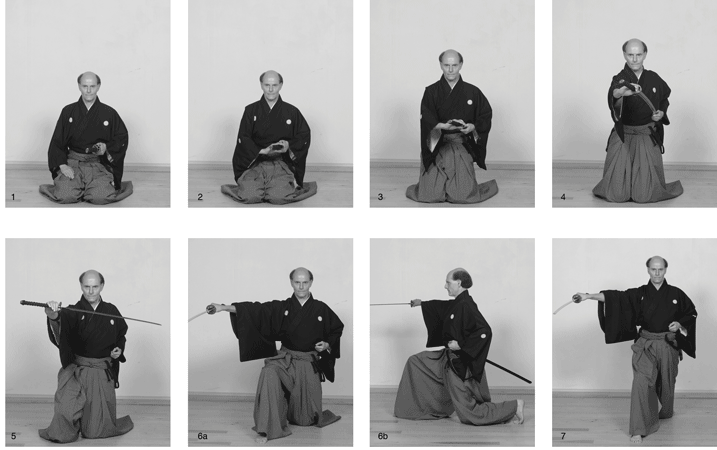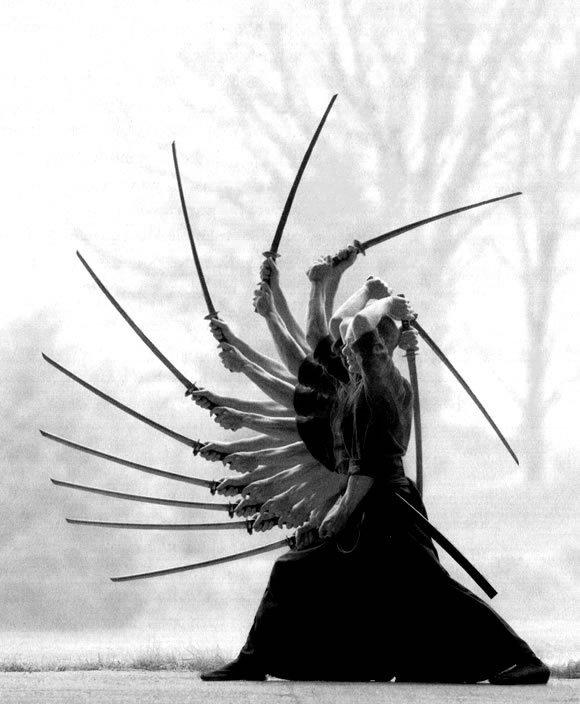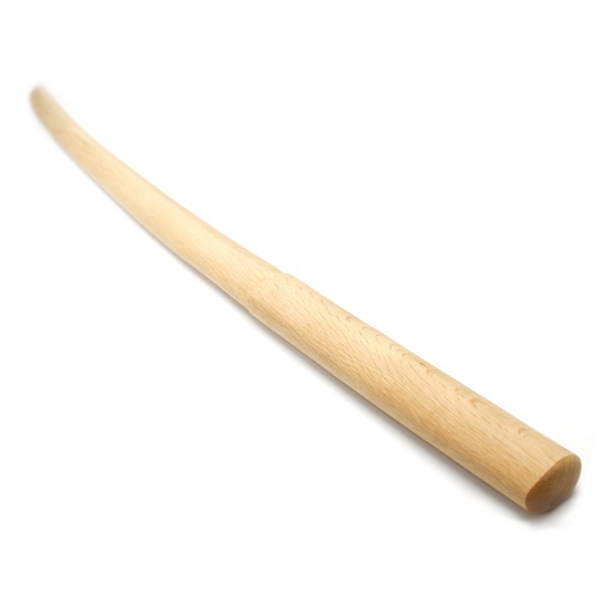Circular Motion and Friction
| Home Page |
What is
Iaido? |
Circular
Motion and Friction |
Physics
of a Cut |
Sources |
Nukitsuke is a forward, horizontal cut that goes left to right. Kirioroshi is a vertical, forward cut that goes from top to bottom. For these two movements, we will assume that the sword travels in a perfectly circular motion. Horizontal Circular Motion - Nukitsuke  Performing Nukitsuke, a horizontal strike Photo Credit: tao-yin.fr/iai-do/ Vertical Circular Motion - Kirioroshi  Performing Kirioroshi Photo Credit: Kurikara: The Sword and the Serpent by John Maki Evans For Nukitsuke, we can solve
for tension in the arm. Because velocity
increases with an increase in radius, we will
solve for the velocity of the sword handle or the point where the
hand meets the sword.
We begin with the acceleration in the
y direction.
Because the
movement is horizontal, there is no
acceleration in the y direction. The sum of
the forces include the force of gravity and
the y component of tension in the arm. When
practicing Iaido, the arm is not perfectly
horizontal. There is a slight angle which is
why we must split tension into two components.
 We can solve for
tension in the arm.
We can use the
centripetal acceleration to solve for
velocity. The sum of the forces include the x
component of the tension.
We can replace the
centripetal acceleration with its definition
in terms of velocity and radius.
The radius of the
circle different from the length. In this
example L represents arm length while radius
represents the path the handle travels.
By substituting R
and rearranging the equations, we can solve
for velocity.
 For Kirioroshi,
we can also solve for the tension in the arm
and the velocity of the sword handle.
We begin by using the equation for
centripetal acceleration and Newton's Second
Law.
The sum of the forces include the force
of gravity and tension.
We can solve for velocity by rearranging
the equation.
 We can solve for tension by rearranging
the equation again.
The Importance of Friction
  Photo Credit: www.tozandoshop.com, www.tozandoshop.com The max static equation can only be used
at the threshold of motion (the point where
static friction becomes kinetic friction).
The
centripetal acceleration is the acceleration in
the x direction so we can substitute it here.
We
also replace the centripetal acceleration with
its equation in terms of velocity and radius.
 We
can solve for velocity be rearranging the
equation.
 The Definitions of Variables Horizontal and Vertical Circular
Motion:
 Friction:  Why do these equations matter?
|